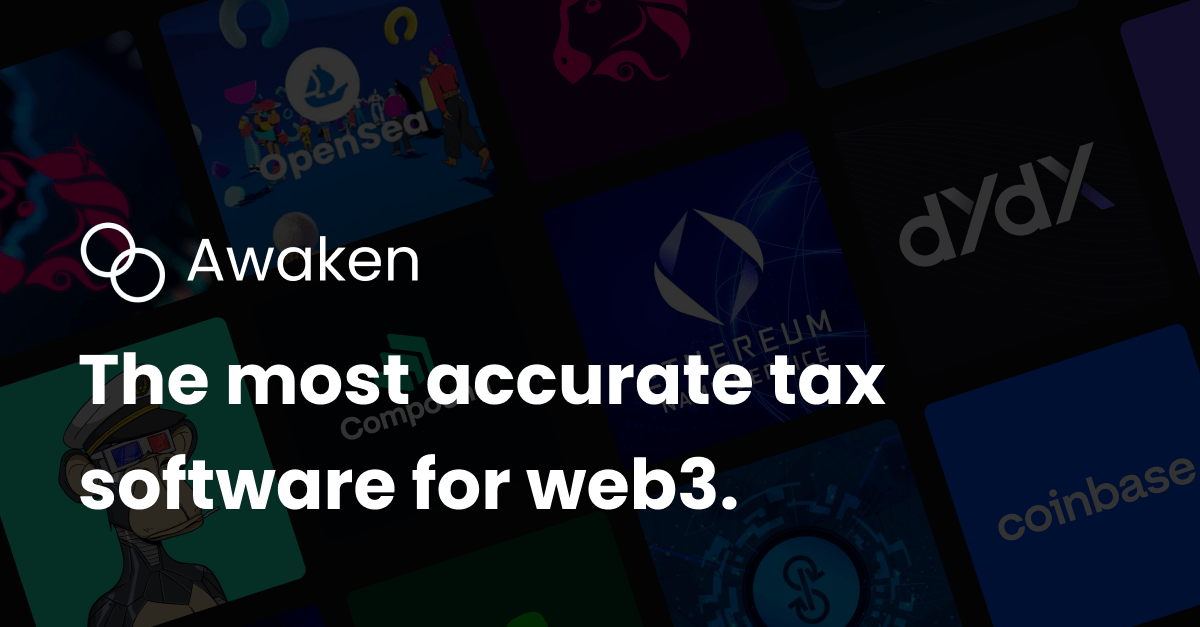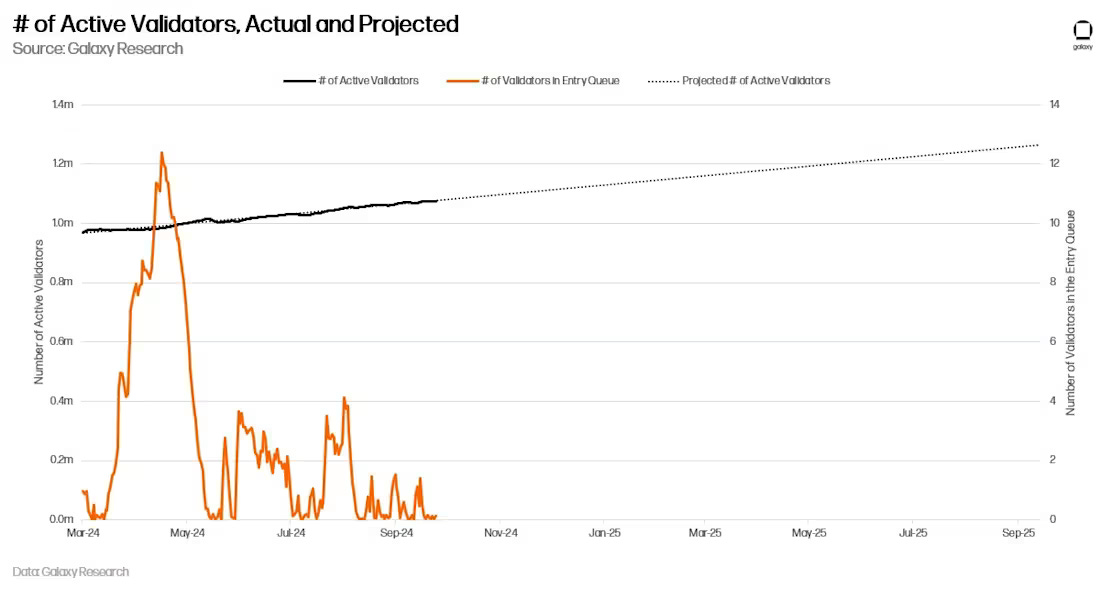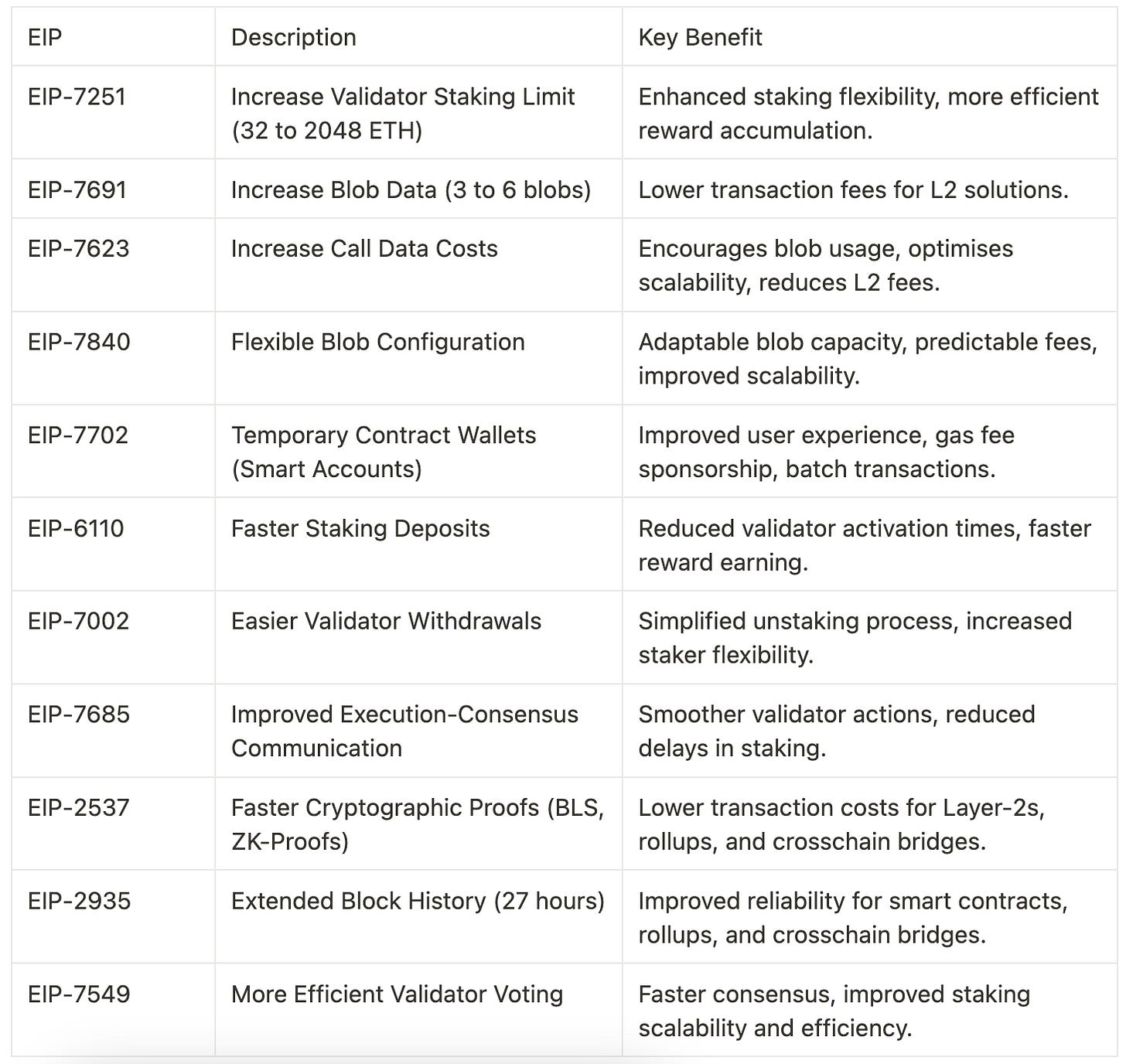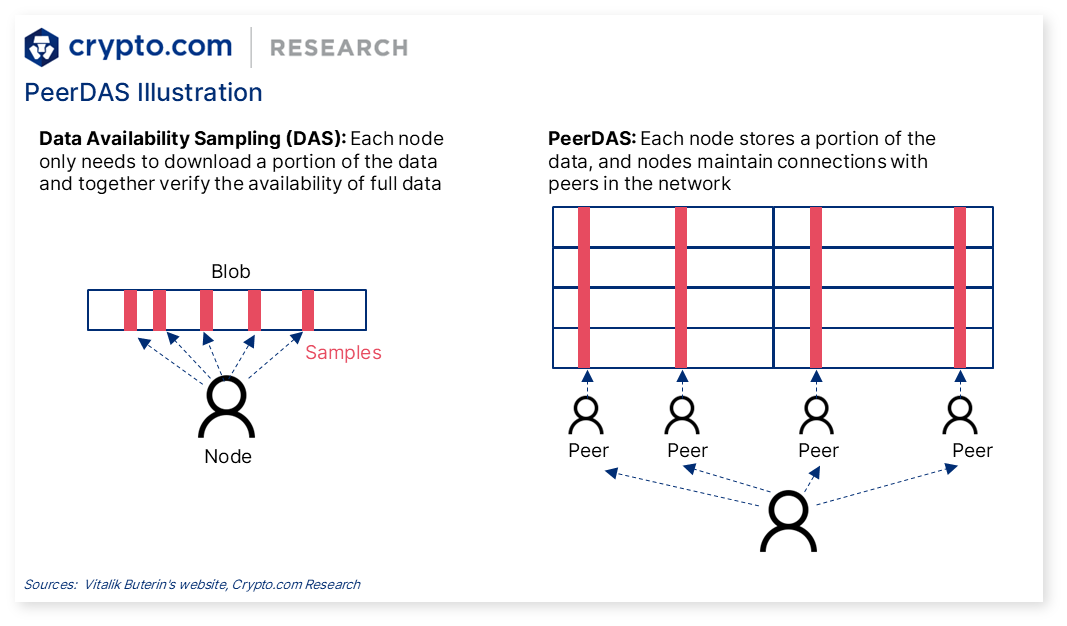Happy Sunday dispatchers!
While you were tracking Bitcoin's price, Ethereum has been quietly fighting for its identity.
The once-revolutionary blockchain that brought us ICOs, DeFi, and NFTs now faces an existential threat – not from regulators or hackers, but from its own methodical pace.
This April's Pectra upgrade might be Ethereum's one of the most consequential moments since The Merge, but not for the reasons its developers think.
In this week's Rabbit Hole, we reveal why the smartest builders in crypto are questioning Ethereum's future, what Pectra's testnet failures signal, and the uncomfortable truth about what happens when innovation becomes institutionalised.
Do Your Crypto Taxes for FREE with Awaken
Effortless Tax Filing for Crypto Holders
2024 was a big year for crypto traders. Now, tax season is here—but it doesn’t have to be complicated. Awaken simplifies the process, helping you file in minutes.
Secure and private—your data stays encrypted
Supports Bitcoin, Solana, Ethereum, Base, Hyperliquid, and Sui
Works with DeFi, NFTs, staking, LPing, and trading
How It Works
Connect your wallets & exchanges (Coinbase, Kraken, Gemini, and more)
Auto-import & label every transaction—no manual work needed
Download a ready-to-file tax report for multiple countries
Get your crypto taxes sorted—fast, accurate, and free.
Pectra was supposed to be a landmark upgrade for the second largest cryptocurrency. Then reality set in.
Originally planned as a massive upgrade combining two separate forks — Prague (execution layer) and Electra (consensus layer) — with up to 20 Ethereum Improvement Proposals (EIPs), Pectra has been split in two. The question now is if the upgrade will satisfy the growing chorus of critics who say Ethereum is moving too slowly.
When Base creator Jesse Pollak publicly declared Ethereum's roadmap "not even close to aggressive enough," he wasn’t alone. Even ETH researcher Dankrad Feist agreed the existing scaling plan is "unambitious."
What exactly is Pectra?
At its core, Pectra is a hard fork that introduces 11 key EIPs across both Ethereum's execution and consensus layers. Unlike soft forks, hard forks require all nodes to upgrade their software to remain compatible with the network.
Each of Pectra’s two layers - Prague and Electra - handles distinct functions: the execution layer processes transactions and smart contracts, while the consensus layer coordinates validator activities and ensures network security.
Get 17% discount on our annual plans and access our weekly premium features (HashedIn, Wormhole, Rabbit hole and Mempool) and subscribers only posts.
The Technical Details
Smart accounts for everyone (EIP-7702)
EIP-7702 allows externally owned accounts (EOAs) — regular wallets controlled by private keys — to temporarily upgrade into contract accounts during transactions.
This fundamentally changes how users interact with Ethereum.
Transaction batching: Instead of signing multiple transactions (like "approve" then "swap"), users can combine them into one action.
Gas fee sponsorship: Third parties can pay transaction fees on behalf of users, and fees can be paid in ERC-20 tokens (like USDC) rather than just ETH.
Privilege de-escalation: Users can create sub-keys with limited permissions (e.g., a key that can only spend 5% of total wallet balance per day).
Technically, this works by allowing EOAs to temporarily set account code for a single transaction. The account remains an EOA afterward, meaning users keep their existing addresses and private keys.
This is more elegant than the previous account abstraction attempt (ERC-4337) which required users to create entirely new wallets. According to Mallesh Pai, the senior director of research at Consensys, Vitalik Buterin developed this solution in under an hour during "a safari in Kenya."
Doubling the blob count (EIP-7691)
EIP-7691 increases the target blob count from three to six per block, with the maximum limit rising from six to nine. Blobs (Binary Large Objects) are temporary storage units introduced in the Dencun upgrade that allow layer-2 solutions to store their transaction data cheaply without competing with mainnet transactions.
Each blob can store approximately 125 KB of data, meaning this upgrade effectively doubles L2 data capacity.
This is crucial.
L2s store their transaction batches in these blobs
The current three-blob target has already proven insufficient
When blob demand exceeds supply, costs spike dramatically
Under the hood, blobs are stored separately from the main chain state and are automatically pruned after about four to five weeks, making them perfect for L2 data that only needs to be temporarily available for verification.
Validator staking limits increase (EIP-7251)
EIP-7251 increases the maximum effective balance per validator from 32 ETH to 2,048 ETH, while maintaining the 32 ETH minimum requirement.
This solves several technical problems.
Network overhead reduction: Currently, staking 2,048 ETH requires running 64 separate validators, creating 64x more network communication and signature aggregation overhead.
Improved compounding: Currently, rewards exceeding 32 ETH are automatically swept to the withdrawal address. After this change, rewards can remain with the validator and compound.
Partial withdrawal flexibility: Stakers can withdraw portions of their stake without exiting completely.
For large staking operations like Lido (which runs ~305,000 validators with a 28% network share), this allows significant consolidation of validators. According to Galaxy Research, Ethereum would hit networking issues at 1.4 million validators under the current system.
Importantly, the block proposer selection probability remains weighted by effective balance ratio, ensuring large validators don't gain unfair advantages after consolidation.
Exiting staking without permission (EIP-7002)
EIP-7002 allows smart contracts to trigger validator exits without requiring the validator operator's approval. This addresses a critical security issue in delegated staking.
Currently, if you stake through a service that controls the validator keys, you might be unable to withdraw your funds without their cooperation. This creates significant counterparty risk.
The technical implementation separates the validator key (used for consensus operations) from the withdrawal key (controlling funds). With EIP-7002, withdrawal key holders can submit an exit request as a standard transaction, initiating a validator exit without needing the operator's involvement.
For staking pools like Lido and Rocket Pool, this also provides a crucial safety mechanism. If a node operator becomes malicious, the DAO can force validator exits to protect user funds, rather than being at the mercy of the operator.
Extended block history (EIP-2935)
EIP-2935 increases Ethereum's onchain block history from 256 blocks (~51 minutes) to 8,192 blocks (~27 hours).
This significantly improves applications that rely on historical block data.
Layer-2 rollups that need to reference past blocks for transaction verification
Cross-chain bridges that secure transactions by verifying previous blocks
Randomness generators that use block hashes as entropy sources
This extended history improves both security and user experience by reducing the likelihood of applications needing to access external services for historical data.
Ethereum Pectra Upgrade: EIPs
The Troubled Testnets
On March 5, Ethereum's core developers deployed Pectra on the Sepolia testnet. Initial reports claimed a "perfect proposal rate," suggesting a flawless launch. Hours later, however, core developer Tim Beiko tweeted that his team was "investigating an issue caused by the custom deposit contract."
This followed a more significant setback in late February, when Pectra failed to achieve proper functionality on the Holesky testnet. The issues stemmed from "correlation penalties" and "validator balance drains" that caused a chain split, briefly disrupting the network.
Read: All That Troubles Ethereum 🌪️
These challenges cast doubt on the April mainnet launch timeline, with developers potentially needing more time to resolve the technical issues.
The most transformative scaling technology, Peer Data Availability Sampling (PeerDAS or EIP-7594), has been pushed to the next upgrade, codenamed Fusaka. This represents the biggest disappointment for scaling advocates.
PeerDAS would revolutionise data availability by allowing nodes to verify blob data without downloading entire blobs, functioning like BitTorrent for blockchain data. Nodes would only store small portions of each blob while collectively ensuring data availability.
According to Buterin, this could increase blob capacity by 2-4x immediately, growing to 8x or more later. For L2s, this means potentially 48+ blobs per slot by next year — far closer to the acceleration that critics like Pollak demand.
Can Pectra Save Ethereum?
Ethereum's position as the dominant smart contract platform is under unprecedented pressure. Its TVL (Total Value Locked) growth has stalled, ETH has underperformed compared to both Bitcoin and major alt-L1s, and perhaps most concerning, its developer mindshare is eroding.
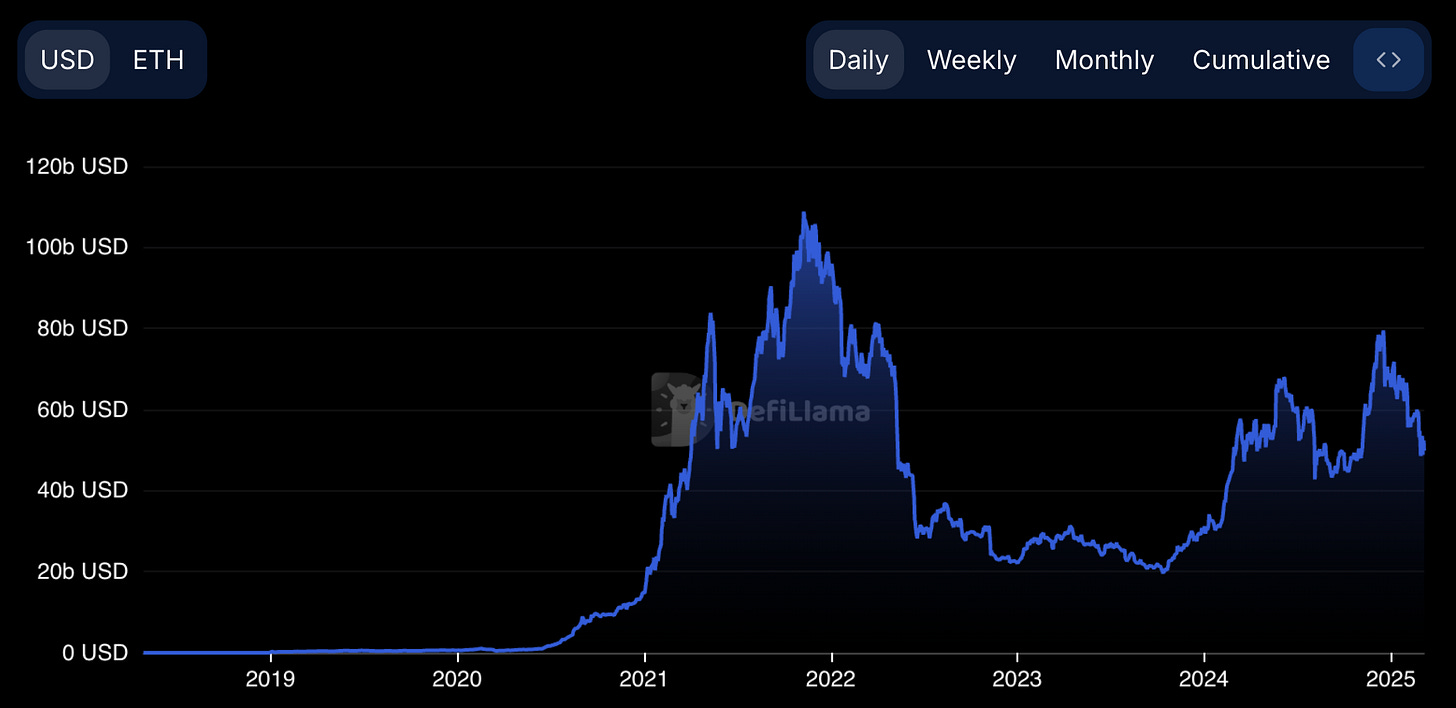
The tricky part is to see if the Pectra upgrade brings improvements fast enough to maintain Ethereum's relevance.
Ethereum faces three existential challenges that Pectra only partially addresses.
The scaling crisis: While doubling blob capacity helps, it's a band-aid on a haemorrhaging wound. Consensys’ Mallesh Pai admits the upgrade "will only be enough until the end of the summer." Solana already processes over 3,000 TPS with sub-second finality while Ethereum handles around 15-30 TPS with 15-minute finality. Without PeerDAS and significant further scaling, this gap will only widen.
The fee problem: L2s were supposed to solve Ethereum's high fee problem, but even L2 fees shoot up during high demand. With Coinbase's Base and other L2s growing rapidly, the limited blob space has already proven insufficient. If Ethereum can't reliably provide cheap transaction space for L2s, users and developers will eventually look elsewhere.
The coordination dilemma: Ethereum's governance process is deliberately slow and conservative. While this reduces risk, it creates a coordination nightmare when urgent changes are needed. The decision to split Pectra and postpone PeerDAS exemplifies this problem — critical updates get pushed back while competitors move forward.
Joe Lubin's defence that "upgrading a $400 billion blockchain requires balancing speed with caution" rings hollow to many in the ecosystem. Along with its own survival, Ethereum is also competing with Solana, Avalanche, Sui, and dozens of other chains that are moving much faster.
The longer Ethereum takes to scale, the more opportunity these competitors have to establish dominant positions in crucial growth areas like DeSoc (decentralised social), gaming, and institutional DeFi.
Pectra's limited scaling improvements and testnet troubles feed this narrative of Ethereum as the slow, cautious incumbent being outpaced by hungry challengers.
The Bull Case
Ethereum defenders have compelling counterarguments. The blockchain trilemma — the tension between decentralisation, security, and scalability — remains unsolved. Ethereum's methodical approach prioritises the first two, arguing that scalability will come in time.
The argument that arises is that: What's the point of being fast if you're centralised or broken?
This long-term vision sees Ethereum as fundamental infrastructure rather than a consumer product. May not be the fastest protocol, but its reliability and security make it the foundation others build upon.
In this view, Pectra is exactly what Ethereum needs — thoughtful improvements that maintain backward compatibility while incrementally enhancing capacity and user experience. L2s handle the speed, while Ethereum provides the security and settlement guarantees.
Token Dispatch View 🔍
Pectra occupies an uncomfortable middle ground: too incremental to silence critics, too important to dismiss. It's the blockchain equivalent of bringing a knife to a gunfight — useful, but questionably sufficient.
The network that once boldly pioneered smart contracts, ERC-20 tokens and proof-of-stake, now moves with the caution of a central bank rather than the urgency of a revolutionary technology platform. This transformation from disruptor to incumbent is understandable but potentially fatal in the rapidly evolving blockchain landscape.
Account abstraction improvements are nice, but they're table stakes when competing chains already offer sub-second finality and transaction costs measured in fractions of a penny.
Validator updates strengthen security for a network already secure enough to handle hundreds of billions in value. Doubling blob capacity buys time — but time is precisely what Ethereum doesn't have as developer mindshare bleeds to faster-moving ecosystems.
Ethereum's strategic dilemma comes from its own community. When Jesse Pollak — who runs Base, Ethereum's fastest-growing L2 — publicly calls the roadmap "not even close to aggressive enough," something is deeply wrong.
When ETH researcher Dankrad Feist agrees it's "unambitious," alarm bells should be ringing in Zug, Berlin, and everywhere else Ethereum's leadership congregates.
Read: Pectra hard fork explained — Will it get Ethereum back on track?
Without PeerDAS and a clear acceleration of the roadmap, Pectra feels incomplete — a stepping stone rather than the leap forward Ethereum needs.
The most frustrating aspect is that Ethereum has the intellectual firepower to move faster. It's about narrative. Bitcoin has cemented its position as digital gold. Solana has claimed the performance crown. What is Ethereum's narrative if not the ultimate smart contract platform? "Security and decentralisation" aren't compelling selling points if your competitors are "secure and decentralised enough" while offering 100x better performance.
The true test isn't Pectra itself, but whether Ethereum's leadership can respond to the growing chorus of criticism by accelerating development without compromising core values. Can they recapture the boldness that made Ethereum revolutionary in the first place? For now, Ethereum continues its methodical march forward, betting that in blockchain, as in Aesop's fable, the tortoise will ultimately prevail over the hare. The tortoise won in the story, of course, but only because the hare fell asleep. Today's competitive L1s show no signs of napping.
Ethereum still has time to avoid this fate, but that time is running shorter with each incremental upgrade. Whether users and developers have the patience to wait for Ethereum's methodical approach to scaling while alternatives race ahead remains the $400 billion question.
For those betting on ETH, Pectra isn't reassuring evidence that Ethereum is accelerating to meet the competitive threat. It's a warning sign that the network that revolutionised blockchain may have lost the revolutionary spirit that made it great.
Week That Was 📆
Saturday: The Trump-Pump-Dump Trifecta is Complete
Thursday: XRP, SOL, and ADA: What’s Beyond Trump’s Reserve? 🔄
Wednesday: Has Saylor’s BTC Strategy Hit a Block? ⛔️
Token Dispatch is a daily crypto newsletter handpicked and crafted with love by human bots. You can find all about us here 🙌
If you want to reach out to 200,000+ subscriber community of the Token Dispatch, you can explore the partnership opportunities with us.
Disclaimer: This newsletter contains sponsored content and affiliate links. All sponsored content is clearly marked. Opinions expressed by sponsors or in sponsored content are their own and do not necessarily reflect the views of this newsletter or its authors. We may receive compensation from featured products/services. Content is for informational purposes only, not financial advice. Trading crypto involves substantial risk - your capital is at risk. Do your own research.






